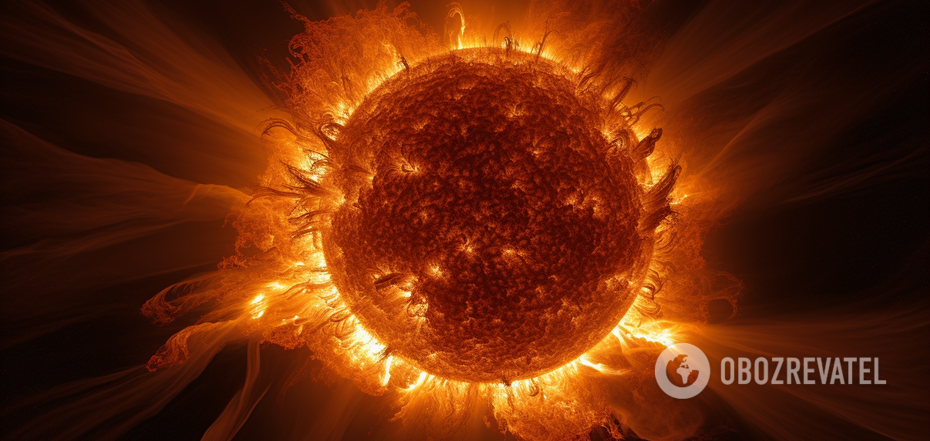Life
This will be the end for mankind: the Sun may release a never-before-seen superburst
Scientists know that solar flares can affect people and cause problems with satellites in Earth's orbit, radio technology, and even a global blackout. However, a recent study has shown that our luminary may be much more sinister.
As it became known from the study, the Sun is capable of releasing a giant plasma flare 1,000 times stronger than any previously recorded flare. Its power would be equivalent to the explosion of 100 billion 1-megaton bombs. The most powerful nuclear bomb exploded by mankind had a yield of only 50 megatons.
Such conclusions were drawn after studying the star KIC9655129, one of our closest neighbors in the Milky Way galaxy.
Normally, the Earth is protected from solar flares by our planet's magnetic field, but such a powerful flare could simply tear this protective layer. Then it would not only lead to global problems with power grids but also to widespread destruction.
The star KIC9655129, astronomers have found, regularly releases such giant super flashes and our Sun is capable too.
"Solar flares and stellar superbursts involve the same physical processes, which supports the hypothesis that the Sun is capable of producing a potentially destructive superburst," said study co-author Anne-Marie Broomhall.
However, scientists reassure us that although the Sun could release such a superburst, its probability remains low.
"Fortunately, the conditions necessary for a superburst are extremely unlikely on the Sun, based on preliminary observations of solar activity," said lead researcher Chloe Purg.
However, the author of another study published in The Astrophysical Journal, Yuta Notsu, believes that such a flare could occur within the next 100 years.
The study notes that massive superbursts from "slowly rotating sun-shaped stars" occur "about once every 2,000 to 3,000 years." This is much more frequent than catastrophic asteroid strikes, the last of which is believed to have occurred 66 million years ago and wiped out the dinosaurs.
"Our research shows that superbursts are rare events. But there is a definite possibility that we may observe such an event in the next 100 years or so," he said.
That said, as the study's authors point out, a superburst is more likely to mean the end of the world as we know it.
The reason is that a massive power surge from a superburst would be fatal for the power grid and would make it impossible to restart the power grid. So the world will be plunged into dark times, both literally and figuratively.
Without electricity, hospitals will be without power, cities will be without sanitation, food cannot be transported and stored, and the world economy will collapse.
This would, in fact, return mankind to the industrial age, which would be a problem for the nearly 8 billion people of the earth. As a consequence - wars for resources, hunger, and poverty.
Earlier OBOZREVATEL also told about the strange processes of the Sun, which puzzled scientists.
Subscribe to OBOZREVATEL channels on Telegram and Viber to keep up with the latest events.




























